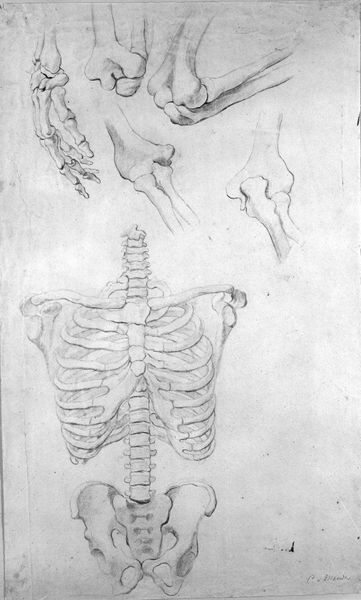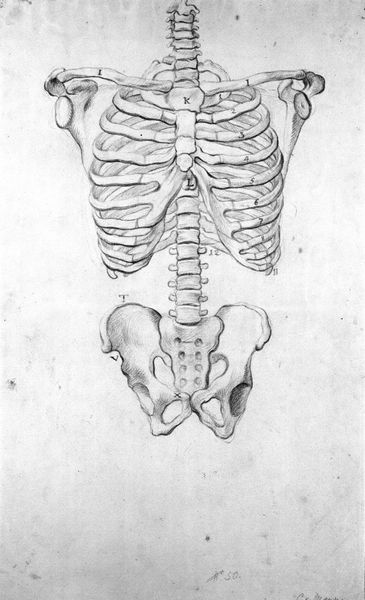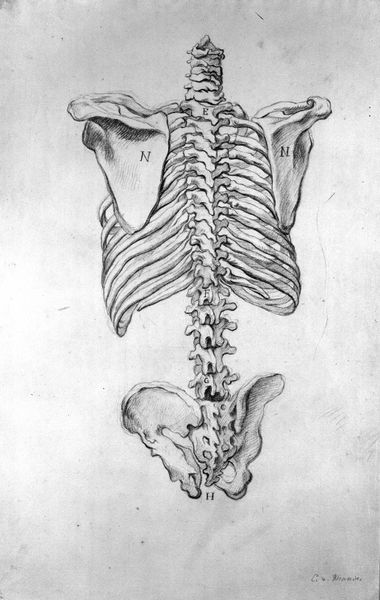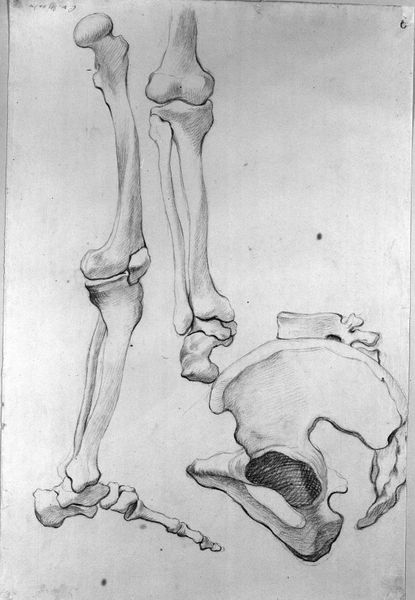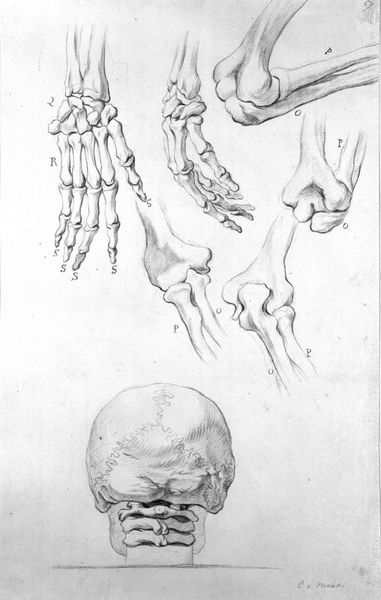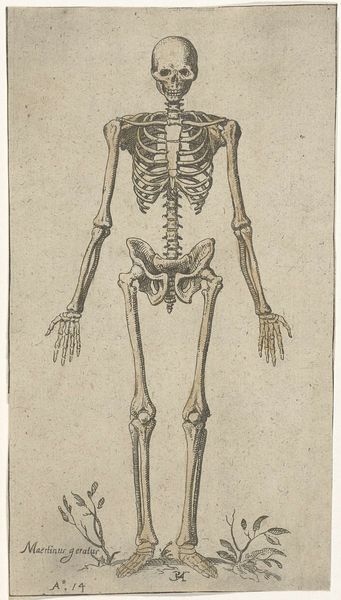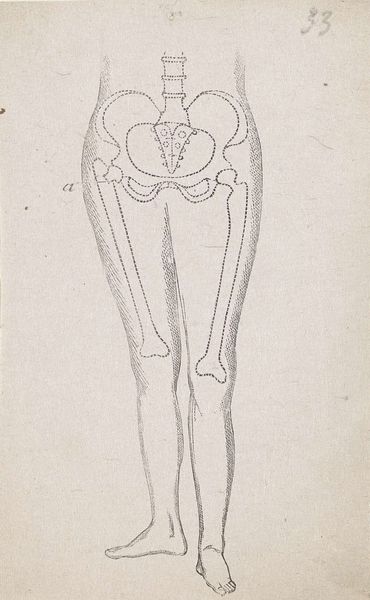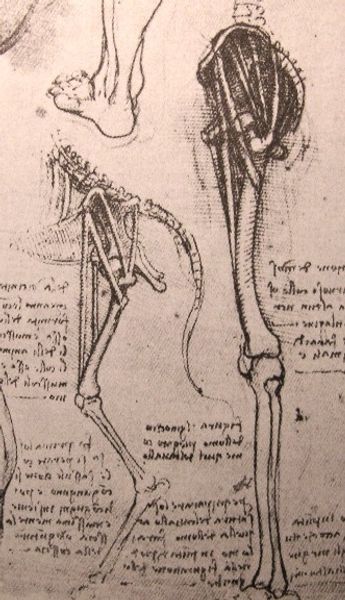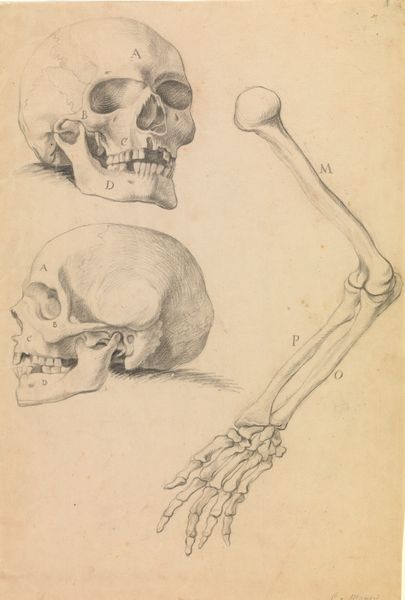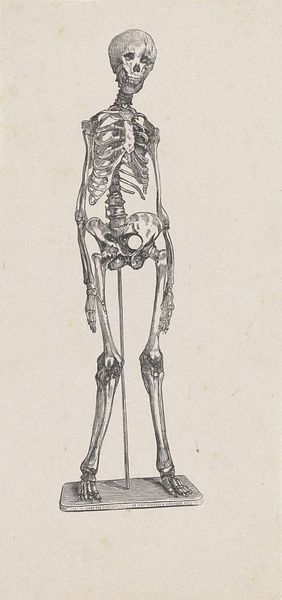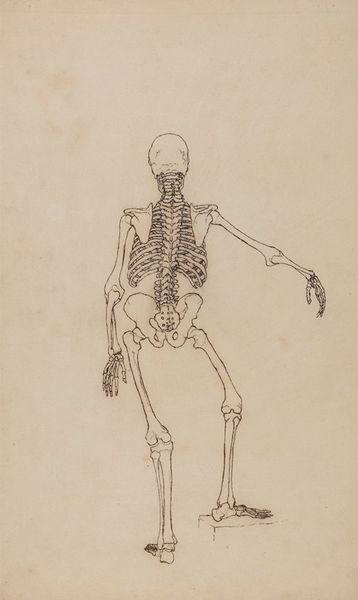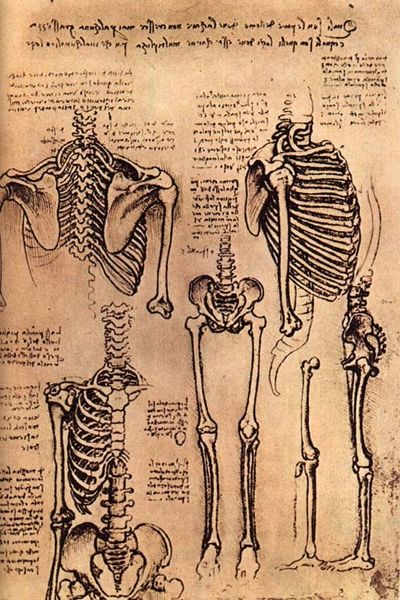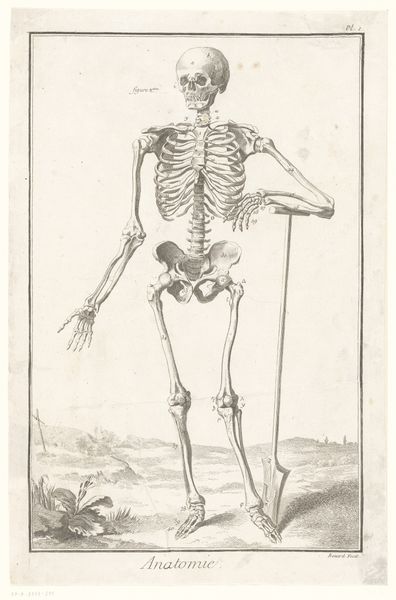
Rygrad med brystkasse og bækken, profil mod venstre; desuden knogler af et venstre ben fra hofte til tåspidsen og detalje af et knæ. (1662?). 1660 - 1663
0:00
0:00
drawing, pencil, graphite
#
pencil drawn
#
drawing
#
pencil sketch
#
form
#
11_renaissance
#
pencil drawing
#
pencil
#
graphite
#
pencil work
#
academic-art
Dimensions: 457 mm (height) x 276 mm (width) (bladmaal)
Editor: This drawing, titled "Rygrad med brystkasse og b\u00e6kken, profil mod venstre; desuden knogler af et venstre ben fra hofte til t\u00e5spidsen og detalje af et kn\u00e6" and created by Karel van Mander III around the 1660s, depicts skeletal studies in graphite. I'm struck by the precision of the rendering. What does this piece reveal to you? Curator: Look closely at the materiality. This isn't simply a drawing *of* bones; it’s about the production *of* knowledge and the training required for artists within the guild system. Consider the social context: anatomical studies became increasingly crucial in academic art during the Renaissance. This graphite drawing, likely a preparatory sketch, shows how artists like van Mander painstakingly learned to represent the human form. What does the use of readily available graphite suggest about its function versus a finished oil painting, for instance? Editor: So, its value isn't necessarily in its aesthetic beauty, but rather its functionality as a study object and its insight into the artist’s working process? Do you see evidence of this practice? Curator: Exactly. Consider the academic setting for which this was most certainly used. Furthermore, the visible pencil strokes, the layering, are signs of labour, the active learning, and repetitive studying the subject with the intetntion to gain mastery of anatomical rendering skills. Think about what was considered to be fine art versus what were thought of as lesser media such as works on paper at the time? Editor: That makes me reconsider my initial impression. The "raw" nature of the sketch emphasizes skill and hard work to reach this stage of development rather than being about finished artwork that feels distant and possibly inaccessible. It reveals how an artist acquired necessary training and insight into anatomical correctness of representing bodies at the time. Curator: Precisely! By focusing on materials, the means of production, and their relation to a structured system such as formal art training or master-student tradition we understand better the work of art’s historical, cultural and social purpose, while placing in historical context.
Comments
No comments
Be the first to comment and join the conversation on the ultimate creative platform.
